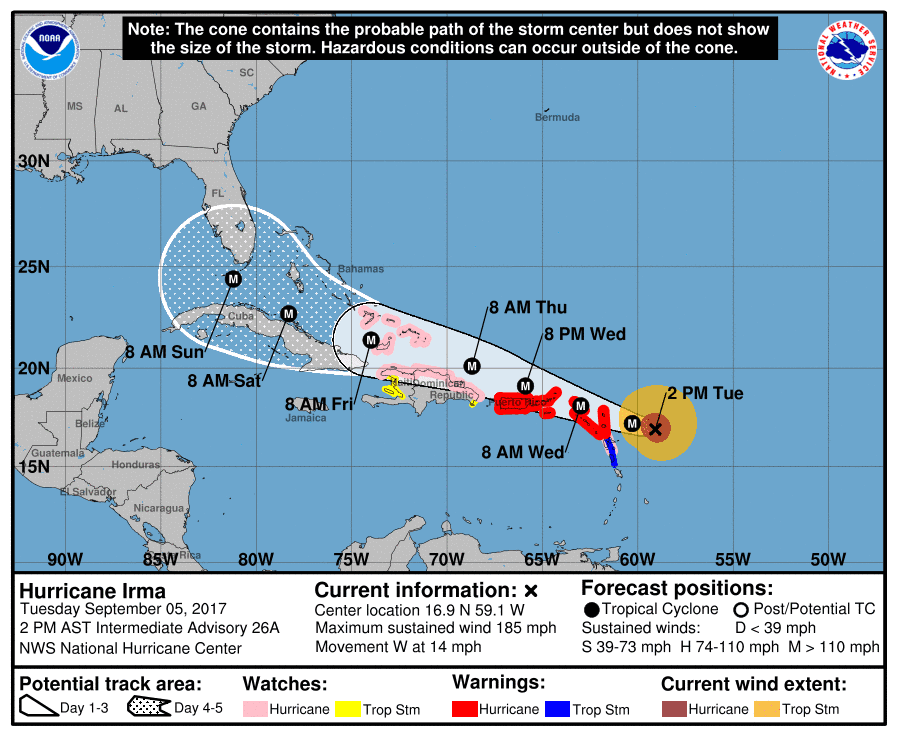Authorities in several Florida counties have issued evacuation orders as Hurricane Irma intensified to a Category 5 storm of historic proportions and catastrophic potential.
Miami-Dade County Mayor Carlos Gimenez ordered evacuations to begin on Wednesday for some of the county’s 2.7 million residents. The mayor also ordered country offices to close on Thursday and Friday, Sun Sentinel reported.
“Because of the strength and intensity of this storm, we need to take action and we need to take action now,” Gimenez said.
People with special needs would be evacuated Wednesday, Gimenez said while advising others to have at least three days worth of food, water, and basic supplies.

NOAA




